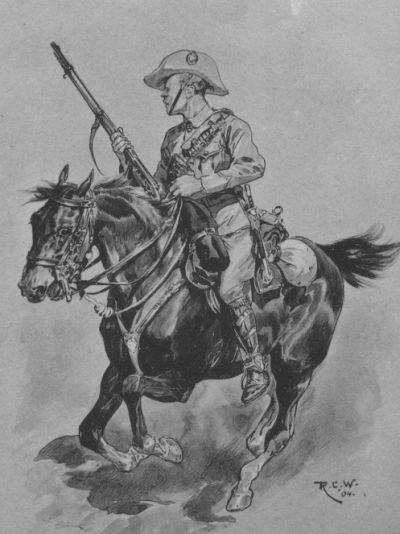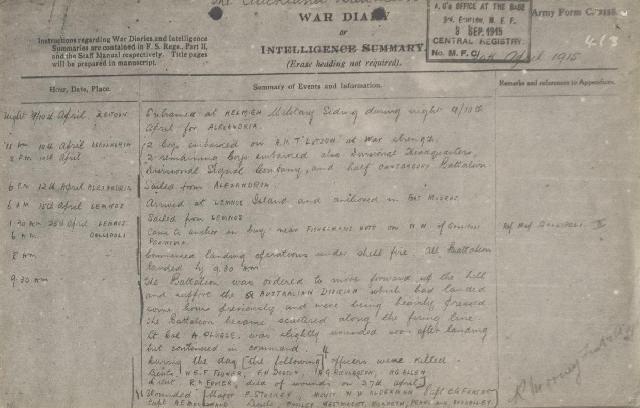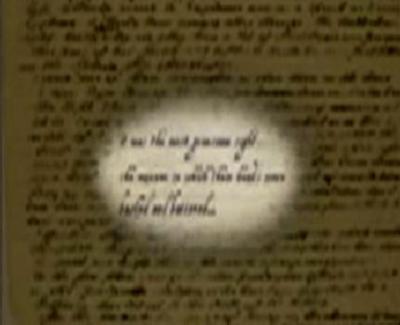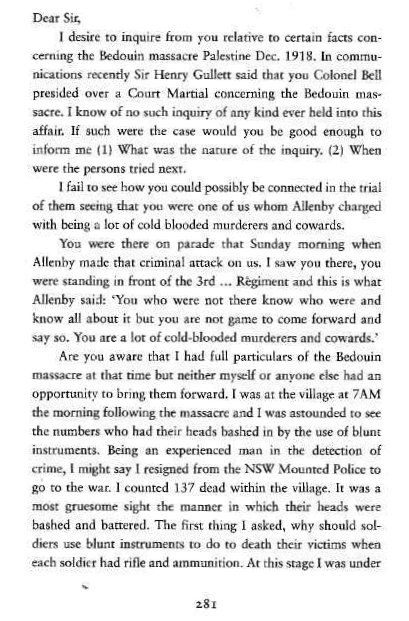Topic: AIF - 4B - 4 LHR
4th LHR, AIF
4th Australian Light Horse Regiment
Roll of Honour
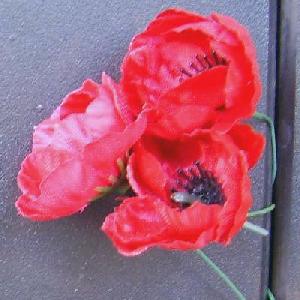
Poppies on the Roll of Honour, Australian War Memorial, Canberra
The Roll of Honour contains the names of all the men known to have served at one time with the 4th Light Horse Regiment and gave their lives in service of Australia, whether as part of the 4th Light Horse Regiment or another unit.
Roll of Honour
Arthur John ADAMS, Killed in Action, 20 September 1917.
Thomas AGNEW, Died of Wounds, 6 August 1915.
George ALEXANDER, Killed in Action, 25 March 1917.
Jack ALLEN, Killed in Action, 4 May 1918.
William Robert ALLEN, Killed in Action, 1 February 1917.
Frederick Clifford ALLINGHAM, Killed in Action, 20 July 1916.
John Clyde ALLISON, Killed in Action, 24 April 1918.
Francis David AMIET, Killed in Action, 7 June 1917.
Alexander ANDERSON, Killed in Action, 12 April 1919.
Arthur James ANDERSON, Died of Wounds, 3 June 1918.
William Walter ASH, Killed in Action, 2 May 1918.
Clarence Etheridge ATKINSON, Killed in Action, 28 June 1915.
Ernest Edward AUSTIN, Killed in Action, 4 October 1917.
Alfred BAILES, Died of Wounds, 8 August 1915.
Ralph BARNFATHER, Killed in Action, 19 July 1916.
Edward Victor BARROW, Killed in Action, 17 June 1917.
Norman James BARTLETT, Died of Wounds, 24 May 1915 , and subsequently buried at sea. .
Harry Cyril BASTOW, Killed in Action, 4 October 1917.
Harold Thomas BELL, Died of Wounds, 1 November 1917.
William Robert BELL, Killed in Action, 27 July 1918.
Frederick Rubon BENHAM, Killed in Action, 27 April 1918.
Lewis Richard BERRYMAN, Killed in Action, 25 June 1917.
Henry BIGGS, Killed in Action, 2 May 1918.
Reginald Allan BIRCHENOUGH, Died of Wounds, 15 April 1918.
Frederick Arthur BIRD, Died of Wounds, 6 August 1915.
Lancelot Charles BLACKALL, Killed in Action, 4 May 1918.
Martin Petrie BLUNDELL, Killed in Action, 18 April 1918.
Gilbert John BLYTHMAN, Killed in Action, 4 October 1917.
Henry Joseph BOWERS, Killed in Action, 6 April 1917.
Wesley Stanley BRIDESON, Killed in Action, 22 August 1915.
Frederick Charles Lionel BRIDGELAND, Killed in Action, 6 August 1915.
Reginald William BRINSMEAD, Killed in Action, 17 December 1917.
Harold Osborne BROWNING, Killed in Action, 16 October 1915.
Frederick James BUCHAN, Killed in Action, 1 May 1918.
Archibald Edward BULLER, Died of Wounds, 18 April 1918.
George Walter BURNETT, Killed in Action, 22 August 1917.
Albert BURROWS, Killed in Action, 1 May 1918.
Francis James BURTON, Killed in Action, 31 October 1917.
Edwin George Rutherford CAIRNS, Killed in Action, 4 October 1917.
Edward CALLANAN, Killed in Action, 18 April 1918 .
Dugald CAMPBELL, Died of Disease, 16 November 1915 , and subsequently buried at sea. .
John Murray CAMPIGLI, Died of Disease, 21 November 1918.
Joseph CAREY, Killed in Action, 8 November 1915.
John Ernest CHAPMAN, Killed in Action, 8 August 1918.
Allan Patrick CHRISTENSEN, Killed in Action, 28 September 1918.
Edward Randolph CLEAVER, Died of Wounds, 31 October 1917.
William Crellin CLOVER, Died of Disease, 23 June 1917.
Josiah John COATES, Died of Disease, 17 January 1918.
Harry (Izod) COLDICOTT, Died of Wounds, 7 June 1917.
John CONNORS, Died of Disease, 14 October 1918.
Albert Edward COOPER, Killed in Action, 29 March 1917.
Albert John Benjamin COOPER, Killed in Action, 17 April 1918.
Arthur Lindsay COPE, Killed in Action, 1 September 1918.
Robert James COULTER, Died of Disease, 7 November 1915.
Joseph CROWLEY, Died of Disease, 12 February 1919.
Reginald Jesse CUSSINS, Died of Disease, 7 December 1918.
Charles Malcolm DALTON, Died of Wounds, 12 August 1915.
James Edward DALY, Killed in Action, 29 August 1918.
Allan Vincent DARGAVEL, Killed in Action, 7 November 1917.
Robert DELANEY, Killed in Action, 31 May 1918.
Colin Langston DOUGLAS, Killed in Action, 7 August 1915.
Lachlan James DOWNEY, Died of Disease, 16 October 1918.
Leo DUCKMANTON, Killed in Action, 5 May 1917.
John James DYER, Killed in Action, 29 September 1917.
Francis Thomas EACOTT, Killed in Action, 4 January 1917.
Leicester George ELLIS, Died of Wounds, 23 August 1915 , and subsequently buried at sea. .
James FAHEY, Killed in Action, 31 July 1915.
Frederick Roland FAULKNER, Died of Wounds, 10 May 1917.
Ronald John FLETCHER, Killed in Action, 29 September 1918.
Robert Bartholomew FONTANA, Killed in Action, 1 September 1918.
Alexander Gibson FORSYTH, Died of Disease, 2 April 1917.
John Walter FRANCIS, Killed in Action, 26 September 1917.
William John GARDNER, Died of Wounds, 9 May 1917.
Hugh GILLIES, Killed in Action, 3 May 1918.
Lionel Leonard GORDON, Died of Disease, 24 July 1917.
Edward GORMAN, Killed in Action, 9 October 1915.
James GORRIE, Died of Wounds, 10 August 1915.
Walton Robert GRAYSON, Killed in Action, 26 April 1918.
Edward GREEN, Killed in Action, 3 May 1918.
Charles Edward GUPPY, Died of Wounds, 6 August 1916.
William James HALL, Killed in Action, 14 November 1915.
Gordon Robin HARPER, Killed in Action, 31 October 1916.
Keith HARRINGTON, Died of Wounds, 6 August 1915.
Reginald HARRINGTON, Died of Wounds, 10 June 1918.
Edward Todd HARRISON, Killed in Action, 14 July 1918.
Bernard HERMANN, Died of Wounds, 26 August 1916.
Stanley HICK, Killed in Action, 16 September 1915.
Edward Francis Patrick HILLIEAR, Died of Wounds, 5 August 1915 , and subsequently buried at sea. .
Charles Hugh IBBS, Killed in Action, 16 July 1918.
Thomas Gordon INGLIS, Killed in Action, 3 August 1915.
Arthur Lethero JAMES, Died of Wounds, 2 February 1917.
John JOPE, Killed in Action, 16 October 1918.
Alfred James JURY, Died of Wounds, 22 April 1918.
Henry William JURY, Killed in Action, 28 November 1915.
Daniel KELLY, Killed in Action, 18 April 1918.
John Joseph KENNEDY, Killed in Action, 15 April 1918.
John Michael KENNEDY, Died of Wounds, 6 August 1915 , and subsequently buried at sea. .
Sylvester Daniel KENNEDY, Died of Wounds, 26 August 1918.
Robert KIDD, Killed in Action, 25 October 1917.
Charles David KING, Killed in Action, 1 December 1917.
Walter Rodney KINGHORN, Killed in Action, 31 October 1917.
John KISSICK, Died of Wounds, 25 June 1915 , and subsequently buried at sea. .
Mervyn Digby KNIGHT, Killed in Action, 6 July 1918.
Leslie Reed LANGTRY, Killed in Action, 4 December 1917.
John Francis LATTA, Died of Disease, 12 November 1918.
William James LEE, Died of Wounds, 19 August 1918.
Nicholas LENAGHAN, Died of Disease, 8 May 1916.
Clifton LESLIE, Died of Wounds, 30 October 1916.
George LETTS, Died of Accident, 13 November 1916.
Leslie Cecil LEWIS, Killed in Action, 13 October 1918.
Joseph Herbert LINDSAY, Died of Wounds, 30 June 1915.
John Edward LOWE, Killed in Action, 13 August 1915.
Cecil Flinders LUCAS, Killed in Action, 23 August 1918.
Charles Albert Ernest MacKAY, Killed in Action, 20 June 1918.
Ernest MATTHEWS, Killed in Action, 22 August 1918.
Allan MAY., Died of Wounds, 31 July 1915.
Leslie Cecil MAYGAR VC, Died of Wounds, 1 November 1917.
James Joseph McCAGUE, Died of Wounds, 3 November 1917.
John Elmer McCANCE, Died of Wounds, 9 August 1915.
William Alexander McCAREY, Killed in Action, 4 May 1918.
James McCRAE, Died of Accident, 15 June 1916.
Frederick Alexander McDONALD, Died of Wounds, 17 October 1915 , and subsequently buried at sea. .
Frank McDONNELL, Killed in Action, 19 April 1917.
Duncan Campbell McDOUGALL, Killed in Action, 6 November 1917.
Herbert McGILL, Killed in Action, 30 April 1918.
Francis Edmund McGRATH, Died of Wounds, 31 October 1917.
William Hodge McGREGOR, Killed in Action, 5 June 1915.
Harry Athol McINTOSH, Died of Wounds, 22 October 1917.
William Hutchison McINTOSH, Died of Wounds, 1 December 1917.
James Greer McKAY, Killed in Action, 19 August 1916.
Norman Joseph McKAY, Killed in Action, 11 November 1917.
William Fraser McKERROW, Killed in Action, 4 May 1918.
Archibald McKINNON, Died of Accident, 18 June 1916.
William Carlyle McLEISH, Died of Disease, 6 April 1915.
Angus McLEOD, Died of Wounds, 7 October 1915 , and subsequently buried at sea. .
John McLEOD, Died of Wounds, 18 April 1918.
Oswald Samuel McLEOD, Killed in Action, 18 April 1918.
Horace Joseph McMAHON, Killed in Action, 8 November 1915.
Malcom Wade McPHERSON, Died of Wounds, 17 November 1915.
Harry George MENZIES, Killed in Action, 9 August 1918.
Benjamin Peter George MEREDITH, Killed in Action, 31 October 1917.
Hassef Lees MILLINGTON, Killed in Action, 27 November 1915.
Sydney Newman MITCHELL, Killed in Action, 31 October 1917.
Alfred Norman MOORE, Killed in Action, 6 November 1916.
Robert Herbert MORLEY, Killed in Action, 31 October 1917.
Hugh MORTON, Died of Disease, 1 January 1915.
Humphrey Osborne MOULE, Killed in Action, 6 August 1915.
Albert Herbert MULLER, Killed in Action, 2 August 1915.
Joseph Albert MURPHY, Died of Disease, 17 October 1918.
Joshua Grant MURPHY, Killed in Action, 22 October 1917.
Albert Gordon MURRAY, Died of Disease, 19 November 1918.
Albert John MURRAY, Killed in Action, 10 July 1918.
Arthur William NAGLE, Died of Wounds, 5 February 1917.
James NASH, Killed in Action, 7 June 1917.
Ernest Henry NETHERBY, Killed in Action, 2 May 1918.
William David NIVEN, Died of Wounds, 5 August 1915 , and subsequently buried at sea. .
Percy Henry NORMAN, Died of Accident, 17 October 1918.
Ronald Ewan O'BRIEN, Killed in Action, 20 September 1917.
Thomas Stephen O'BRIEN, Died of Disease, 14 May 1919.
William John O'LEARY, Died of Wounds, 15 June 1915.
Charles OWENS, Died of Wounds, 30 September 1918.
Harry Beckett PATERSON, Killed in Action, 23 August 1918.
Arthur Forbes PAULET, Killed in Action, 5 June 1915.
Roger Henry PAY, Killed in Action, 27 July 1918.
Walter George PEEL, Died of Wounds, 5 September 1915.
Charles Raymond PHILLIPS, Died of Wounds, 19 June 1915 , and subsequently buried at sea. .
Clifford Oswald PHILLIPS, Died of Wounds, 23 August 1915 , and subsequently buried at sea. .
Frederick POND, Killed in Action, 4 February 1917.
Michael Lewis POWELL, Died of Wounds, 19 July 1918.
Joseph James POWER, Died of Accident, 18 March 1915.
Robert Henry Werribee PRATT, Died of Wounds, 12 April 1917.
William George PURVIS, Killed in Action, 12 October 1917.
Alexander Leslie RAY, Killed in Action, 16 September 1915.
John REINEKE, Died of Wounds, 1 November 1917.
John Lewis RENNICK, Died of Wounds, 21 September 1918.
Edwin REYNOLDS, Killed in Action, 25 October 1916.
Rupert REYNOLDS, Died of Wounds, 4 January 1917.
Ormond Francis RICHARDSON, Died of Disease, 12 June 1917.
Frederick Rowland RIGBY, Killed in Action, 18 April 1918.
Herbert Charles RIGBY, Died of Accident, 30 December 1915.
Joseph Arthur ROBERTS, Died of Disease, 25 June 1915.
James ROSS, Killed in Action, 30 April 1918.
Charles RUSSELL, Died of Disease, 12 October 1915 , and subsequently buried at sea. .
Ernest James SAMMONS, Died of Wounds, 24 April 1918.
Alan Robertson SCOTT, Died of Wounds, 29 April 1918.
Alexander Charles SCOTT, Killed in Action, 25 April 1918.
William Royal SELKIRK, Died of Wounds, 17 November 1917.
Patrick SEXTON, Killed in Action, 17 April 1918.
Richard SEXTON, Died of Accident, 5 October 1916.
John SLATTERY, Died of Wounds, 23 August 1915 , and subsequently buried at sea. .
Alexander Sydney SMITH, Died of Wounds, 7 August 1915 , and subsequently buried at sea. .
Duncan SMITH, Died of Disease, 18 October 1918.
Frederick Joseph SMITH, Killed in Action, 7 August 1915 .
Robert Frederick SMITH, Died of Wounds, 2 October 1916.
Walter SMITH, Died of Wounds, 18 October 1918.
William John SMITH, Killed in Action, 6 August 1915.
Clifford STEPHENSON, Died of Wounds, 9 November 1916.
John STEWART, Killed in Action, 30 July 1915.
Sydney John STEWART, Killed in Action, 17 April 1918.
Gerald Cunliffe STONES, Killed in Action, 30 May 1917 .
Murray Charles STORRER, Died of Wounds, 5 June 1915.
Alfred Thomas STUCHBERY, Killed in Action, 2 August 1918.
Richard SWALE, Died of Wounds, 29 September 1917.
Norman Thomas TALBETT, Killed in Action, 5 August 1915.
James Raymond TAYLOR, Died of Wounds, 8 June 1917.
Stanley TAYLOR, Died of Disease, 25 October 1918.
Thomas Henry TAYLOR, Killed in Action, 2 May 1918.
Smedley Joseph John TERRY, Killed in Action, 6 August 1915.
Albert Ernest Victor THOMAS, Died of Disease, 21 October 1918.
Charles Vivian THOMAS, Killed in Action, 29 April 1918.
Reuben Montague THOMAS, Died of Disease, 22 June 1915.
John Hunter THOMSON, Killed in Action, 13 August 1916.
Rupert James TILLY, Died of Wounds, 30 November 1915.
Herbert Stanley TUCKFIELD, Killed in Action, 15 April 1917.
Miles Neil TURNER, Killed in Action, 6 August 1915.
Frank VENDY, Died of Wounds, 31 July 1915.
Walter Arthur WALLER, Died of Wounds, 10 January 1917.
Christopher Norman WARD, Killed in Action, 30 September 1918.
James Edward WAUGH, Killed in Action, 26 August 1916.
Ernest Walter WESTON, Died of Wounds, 5 December 1917.
Clifford Knapsey WHEELINS, Died of Wounds, 4 November 1917.
Patrick WHELAN, Died of Wounds, 9 August 1915 , and subsequently buried at sea. .
Patrick WHELAN, Died of Wounds, 9 August 1915 , and subsequently buried at sea. .
Harold Thomas WICKHAM, Died of Wounds, 1 November 1917.
Reginald WILLIAMS, Killed in Action, 3 August 1915.
Alexander WILSON, Killed in Action, 31 October 1917 .
Francis Ernest WILSON, Killed in Action, 3 January 1917.
Edward WOMERSLEY, Died of Wounds, 2 November 1917.
William John WOODS, Killed in Action, 1 May 1918.
Herbert YOUNG, Died of Wounds, 8 June 1917.
Lest We Forget
Acknowledgement: Many thanks to Steve Becker who provided much of the raw material that appears in this item.
Further Reading:
4th Australian Light Horse Regiment, AIF
Battles where Australians fought, 1899-1920
Citation: 4th Australian Light Horse Regiment, Roll of Honour




